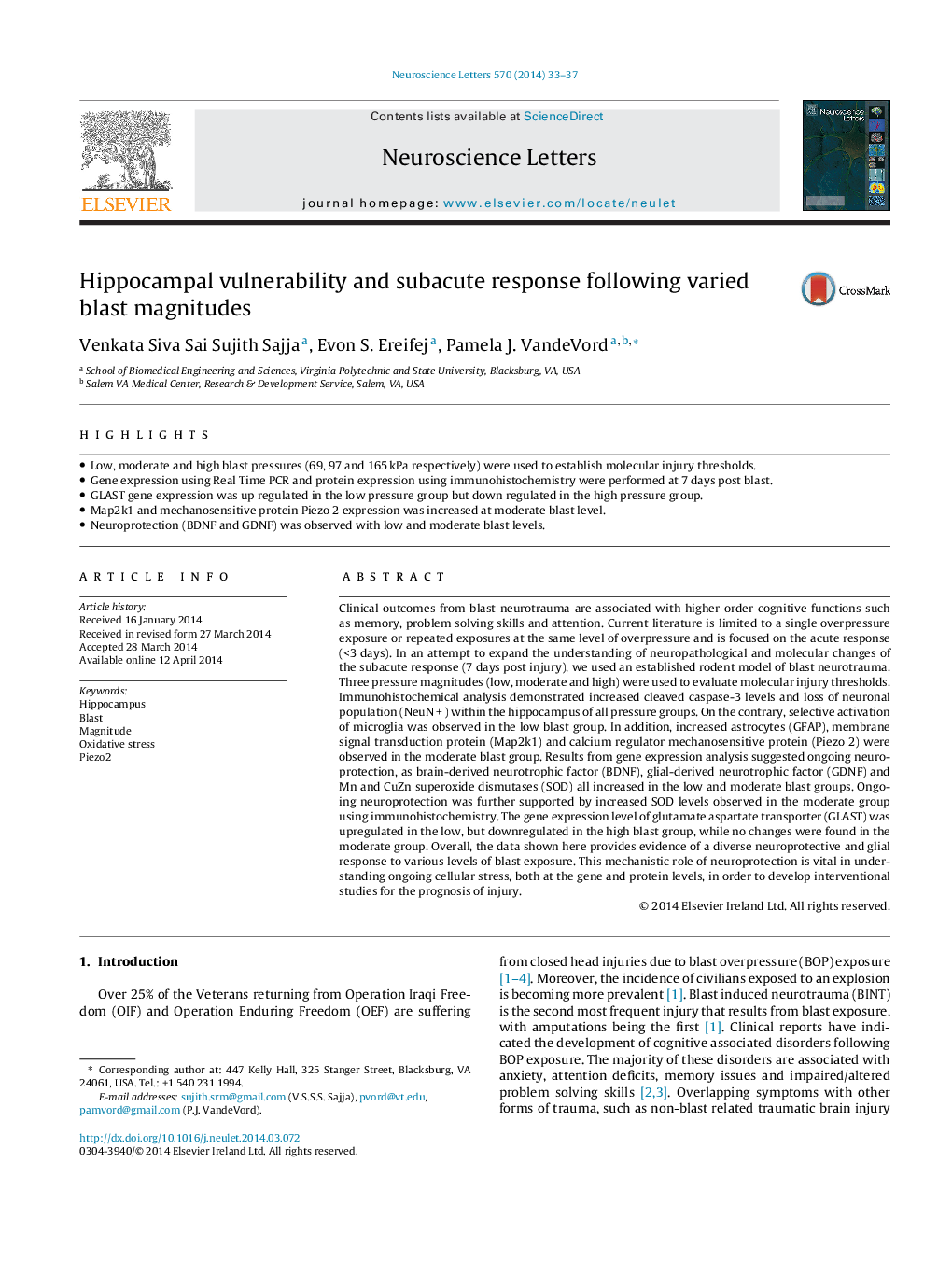| کد مقاله | کد نشریه | سال انتشار | مقاله انگلیسی | نسخه تمام متن |
|---|---|---|---|---|
| 6281851 | 1615129 | 2014 | 5 صفحه PDF | دانلود رایگان |
- Low, moderate and high blast pressures (69, 97 and 165Â kPa respectively) were used to establish molecular injury thresholds.
- Gene expression using Real Time PCR and protein expression using immunohistochemistry were performed at 7 days post blast.
- GLAST gene expression was up regulated in the low pressure group but down regulated in the high pressure group.
- Map2k1 and mechanosensitive protein Piezo 2 expression was increased at moderate blast level.
- Neuroprotection (BDNF and GDNF) was observed with low and moderate blast levels.
Clinical outcomes from blast neurotrauma are associated with higher order cognitive functions such as memory, problem solving skills and attention. Current literature is limited to a single overpressure exposure or repeated exposures at the same level of overpressure and is focused on the acute response (<3 days). In an attempt to expand the understanding of neuropathological and molecular changes of the subacute response (7 days post injury), we used an established rodent model of blast neurotrauma. Three pressure magnitudes (low, moderate and high) were used to evaluate molecular injury thresholds. Immunohistochemical analysis demonstrated increased cleaved caspase-3 levels and loss of neuronal population (NeuNÂ +Â ) within the hippocampus of all pressure groups. On the contrary, selective activation of microglia was observed in the low blast group. In addition, increased astrocytes (GFAP), membrane signal transduction protein (Map2k1) and calcium regulator mechanosensitive protein (Piezo 2) were observed in the moderate blast group. Results from gene expression analysis suggested ongoing neuroprotection, as brain-derived neurotrophic factor (BDNF), glial-derived neurotrophic factor (GDNF) and Mn and CuZn superoxide dismutases (SOD) all increased in the low and moderate blast groups. Ongoing neuroprotection was further supported by increased SOD levels observed in the moderate group using immunohistochemistry. The gene expression level of glutamate aspartate transporter (GLAST) was upregulated in the low, but downregulated in the high blast group, while no changes were found in the moderate group. Overall, the data shown here provides evidence of a diverse neuroprotective and glial response to various levels of blast exposure. This mechanistic role of neuroprotection is vital in understanding ongoing cellular stress, both at the gene and protein levels, in order to develop interventional studies for the prognosis of injury.
Journal: Neuroscience Letters - Volume 570, 6 June 2014, Pages 33-37
